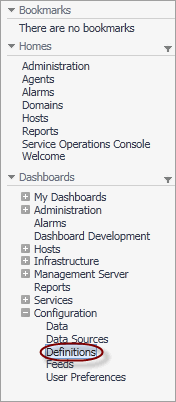Introducing the Web Component Framework
This Web Component Guide provides configuration instructions, conceptual information, and instructions on how to use the Web Component Framework.
This guide is intended for any user who wants to extend Foglight™ using the tools provided by the Web Component Framework to design additional user interface (UI) component
For a quick introduction to how dashboards are built and populated with sample views, try the Web Component Tutorial.
Configuring Views
Foglight™ has a configurable Web-based interface. By performing your own custom configurations, you apply your detailed knowledge of your system to augment or replace the views that Foglight shows by default.
You can arrange or modify the existing components in the browser interface by:
Browser Interface Views
The Browser Interface
The Foglight™ User Guide describes the overall appearance of the browser interface. This document describes the part of the interface used to define, view, and edit elements of WCF. The Definitions dashboard allows you to examine and work with all existing entities in WCF which you can use to build all the views in the browser interface.
You access the Definitions area by clicking Definitions under Dashboards > Configuration in the left navigation panel.
In the Definition tab, select a view from the upper pane to display information about it in the lower pane. You can also access its child views from this pane. Click the Inspect icon to switch to viewing information about the dashboard or view in the Definitions editor. You can see the current bindings for the view’s context keys in the Context tab.

